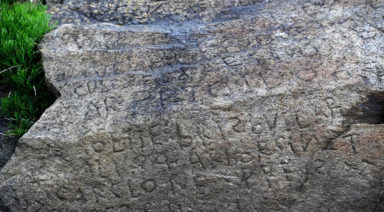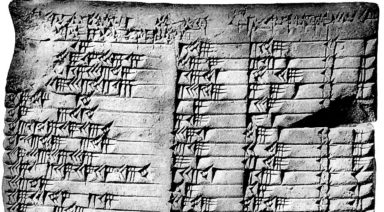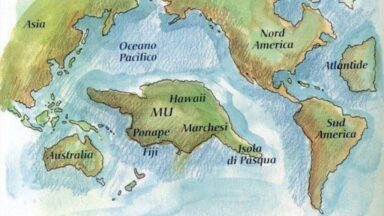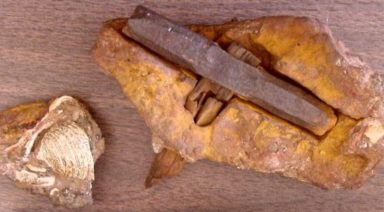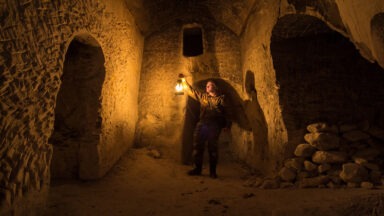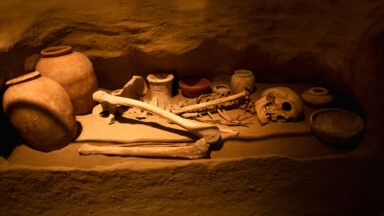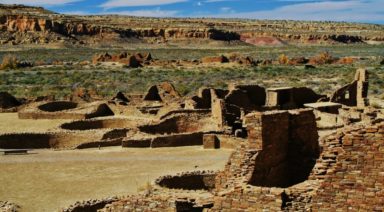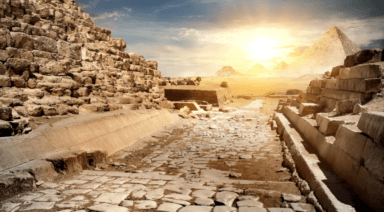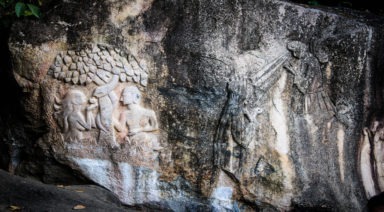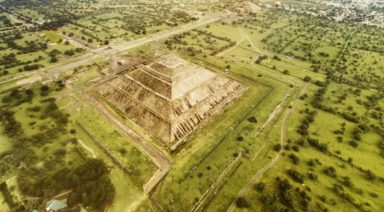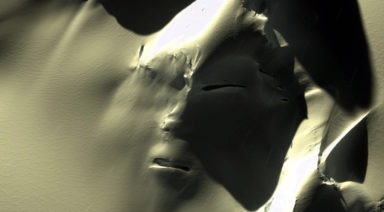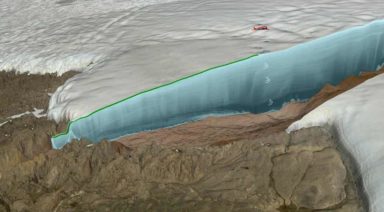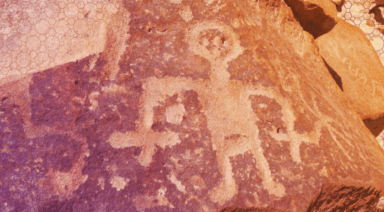How the Mystery of Puma Punku Rivals the Pyramids
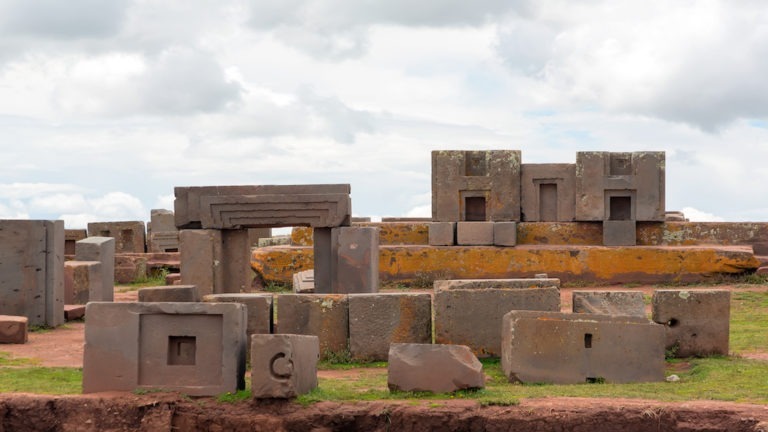
Pumapunku, also spelled Puma Punku, is the remains of an Incan holy site in the jungles of Bolivia that has attracted much attention as of late. The name means “door of the puma,” and as far as archaeologists know, Puma Punku was a thriving, ancient town originating somewhere around 500 and 600 C.E.
Here we are, a century and a half later, and irrepressible rumors continue to grow that Puma Punku’s massively heavy stone block structures were cut so precisely that highly advanced, ancient technology seems to be the only explanation for their incredible stone masonry.
The Tiwanaku (Tiahuanaco) civilization, which predated the Inca, likely influenced them through advanced stonework and agricultural practices. Although the Tiwanaku had declined before the Inca rose to power, the Inca may have adopted and adapted their techniques.
Located 45 miles west of the modern-day city of La Paz, Puma Punku is situated in the still-thriving city of Tiwanaku, high upon a desert plateau of the Andes Mountains, at an altitude of more than 12,000 feet. Tiwanaku is significant in Inca traditions, where the world was once believed to be created.
In this isolated part of the world, the ruins of Puma Punku showcase smooth stone structures made from large andesite and sandstone blocks, featuring precision cuts, clean right angles, and expertly fitted joints without the use of mortar. The megaliths are among the largest on earth, with some weighing several tons. While many of the structures are still standing centuries after their inhabitants disappeared, most of the buildings are scattered and broken around the area, leaving researchers to wonder what possibly could have moved around impossibly heavy buildings.
American Researchers Reconstruct Puma Punku
Until recently, due to the condition and placement of so many stones laid strewn across the landscape, there was really no way of “seeing” what Puma Punku may have looked like during its peak. Owing to the work of University of California–Berkeley researchers, Puma Punku mapping has brought the ancient archaeological site into perspective.
Using historical data, 3D printing, and architectural software, Berkeley archaeologist Alexei Vranich was able to virtually reconstruct Puma Punku, providing a glimpse into the structure’s original appearance.
Vranich said the ancient ruins were reminiscent of a giant Lego set, and he said, “We attempted to capitalize on archaeologists’ learned ability to visualize and mentally rotate irregular objects in space by providing them with 3D printed objects that they could physically manipulate.”
Incan Temple Complex vs. Egyptian Pyramids
The architectural achievements of the Incan Puma Punku and the Egyptian pyramids reflect two distinct approaches to monumental construction. Puma Punku, with its intricately cut and precisely fitted andesite and sandstone blocks, showcases advanced stonework techniques and complex interlocking designs without the use of mortar. The precision of these joints and the engineering required to transport and position such massive stones are remarkable.
In contrast, the Egyptian pyramids, built primarily of limestone blocks, represent an incredible feat of large-scale construction and organization. The pyramids’ sheer size and the precision with which they were aligned to cardinal points demonstrate a different kind of architectural mastery, focused on creating imposing structures with an enduring legacy.
Both sites exhibit extraordinary engineering skills, yet they highlight the unique cultural approaches to architecture and monument-building in their respective civilizations.
Were the Monuments Beyond Human Capability?
Gizmodo notes that Puma Punku was an advanced Andean architectural achievement. “Spanish Conquistadors and others who visited the site during the 16th and 17th centuries described it as a ‘wondrous, though unfinished, building with gateways and windows carved from single blocks.’
Pumapunku displayed a level of craftsmanship that was largely unparalleled in the pre-Columbian New World, and it’s often considered the architectural peak of Andean lithic technology prior to the arrival of the Europeans. Even today, the stonework of the temple is considered so precise that ancient alien enthusiasts claim it was made by lasers and other extraterrestrial technologies.”
David Childress, the author of Lost Cities and Ancient Mysteries of South America, noted that the massive chunks of granite were seemingly scattered around like children’s toy blocks as if a giant cataclysm laid waste to Puma Punku in one fell swoop. Archaeologists are baffled by what Puma Punku was and how it looked, said Childress. The purpose of the enormous structures has yet to be explained.
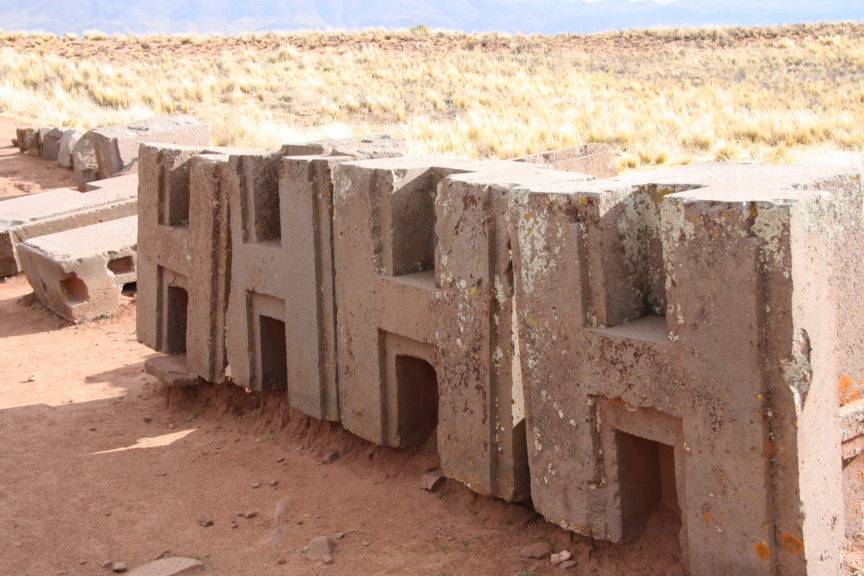
Precisely cut H-shaped blocks at Puma Punku
One fact that is undeniable, however, is that the entire region and its people were important in the ancient world of South America. Theirs was the dominant culture of the Lake Titicaca basin, with an empire covering vast amounts of area in present-day Bolivia, Peru, and Chile.
Just after World War II, Austrian archaeologist Arthur Posnansky had a hypothesis that was far ahead of his time. His writings about the Puma Punku stones in Tiwanaku have been kept alive by Graham Hancock and other writers who defer to Posnansky’s dating of the site to support their theories.
Posnansky, who worked at the site for decades, estimated that Puma Punku was far older than academics assumed. By examining the ruins and their relationship to the stars, the archaeologist dated the ruins to be an astounding 15,000 years old.
As with so many areas featuring crafted structures of such weight and size—some of which are more than 20 feet tall and tens of thousands of pounds—skeptics of academic conclusions begin with the same questions: “How were these structures built, and who really built them?”
The question remains: how did primitive people create smooth and flawless right angles and circular holes in Puma Punku stones with crude hammers and chisels? Even today, the fashioning of these megaliths can only be accomplished with advanced diamond-tipped saws and drill bits. Were there Puma Punku ancient aliens whose technology remains ignored?
Skeptical Logic Has Not Solved the Mystery
Some skeptics claim that the alien theory is nonsense, leaving Puma Punku debunked. Skeptic Brian Dunning, the host of the Skeptoid podcast, described the site’s row of H-shaped blocks that have approximately 80 faces on them, all matching each other with great precision. These stones, he wrote, suggest prefabrication not found at the other Tiwanaku sites. “In addition, some of the stones were held together with copper fasteners, some of which were cold hammered into shape, and others that were poured into place molten.”
Dunning applied logic to the mystery, suggesting that perhaps the Puma Punku blocks were not chiseled but rather poured using concrete or some similar material. However, no evidence has thus far supported the poured concrete theory.
Overall, argues Dunning, Puma Punku may not be a fantastic feat too great for humankind. He points out that the Greek Parthenon was built a thousand years before Puma Punku, “and yet nobody invokes aliens as the only explanation for its great beauty and decorative detailing that more than rivals Pumapunku’s angles and cuts.”
Regardless of the opinions of skeptics, the Puma Punku mystery persists because academia has yet to give a probable explanation for the buildings and how they were constructed.
No Closer to Solving the Puma Punku Mystery
While the site of Puma Punku in Western Bolivia remains a crowning achievement of Andean architecture, and it rivals sites found around the world, scientists have very few answers regarding the most basic questions of who, what, when, and why. Modern archaeologists are not about to entertain the idea of using lasers, ancient alien visitations, or otherworldly means of transporting blocks of stone for miles without any mechanized vehicles. So where does this leave us?
We may add one more possible clue to this story. The mummies of Puma Punku, preserved on one of Tiwanaku’s most sacred sites, provide evidence that all members of society—from infants to the elderly—regularly used psychoactive, hallucinogenic plants. It remains to be shown whether their forays into other dimensions offered these early people a special insight into how to create their megaliths or even how to contact beings who could teach them advanced methodologies.
Evidence the Knights Templar Migrated to Brazil

In the heart of Brazil lies a cave with carvings that may rewrite history. Long before Columbus set foot in the New World, a Medieval society had already taken root. Now researchers are looking for what drove this group across the Atlantic Ocean.
What were they in search of, and what secrets do they now offer the world? A new documentary titled, “The Brazilian Templars Mystery,” sheds light on one of the most overlooked clues to our past and one of the most intriguing and misunderstood cult of warriors — the Knights Templar.
Around 1118 A.D., Hugues de Payens, a French knight, created a military order, along with eight relatives and acquaintances, who became known as the Knights Templar. The order grew rapidly into a large organization of devout Christians during the Middle Ages, charged with an important mission: to protect European travelers on their pilgrimage to the Holy Land and carry out military operations that would ensure a free flow of unhindered pilgrims.
The members of this colorful order of knights swore oaths of poverty and chastity and wore a distinctive badge bearing a red cross on a white mantle. As pilgrimages grew in intensity, so did the numbers of Templars until they became Medieval Christendom’s leading military order.
Over time, the Templars gained a reputation as a wealthy, powerful, and mysterious order that was well-known for their activities as droves of travelers made their way to the holy sites of Jerusalem. When Christian armies wrested control of Jerusalem in 1099 A.D., the Templars opened the floodgates for more and more pilgrims to join.




